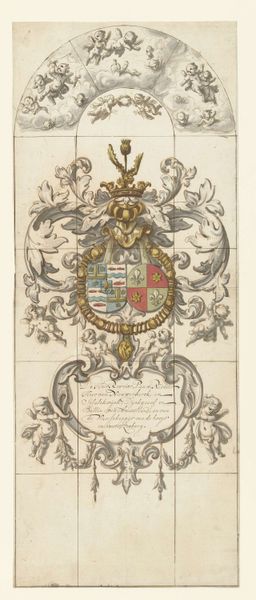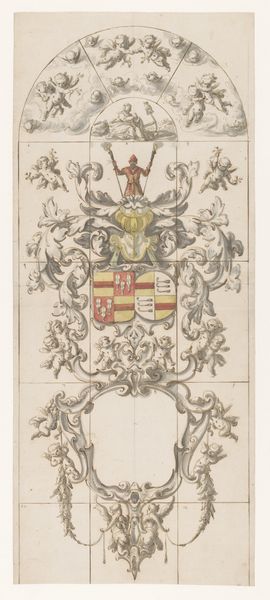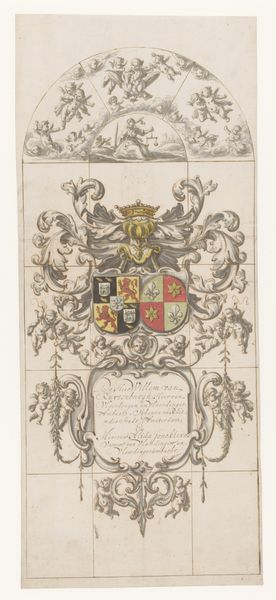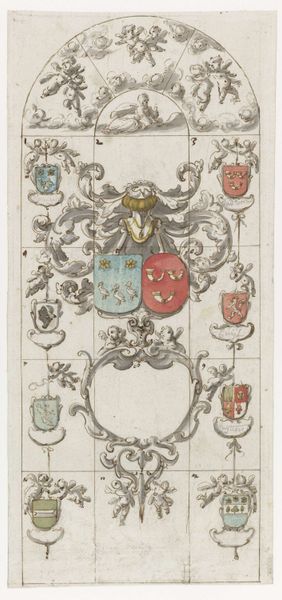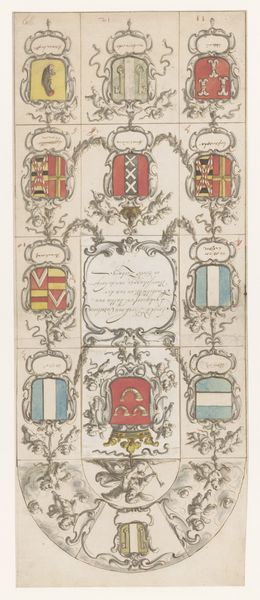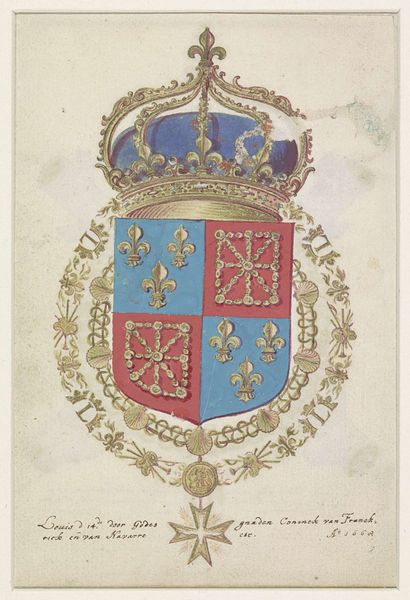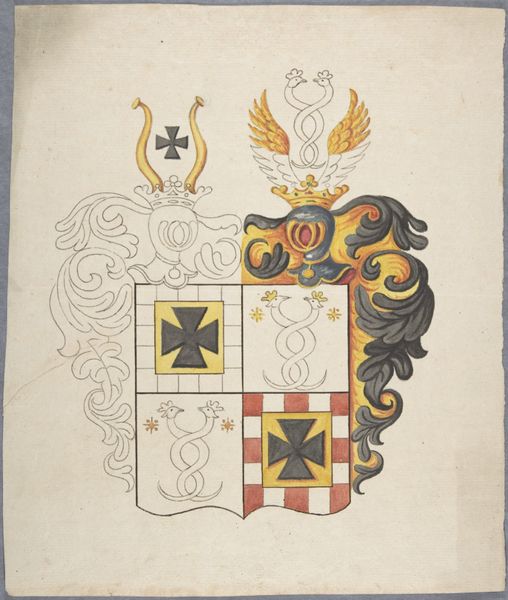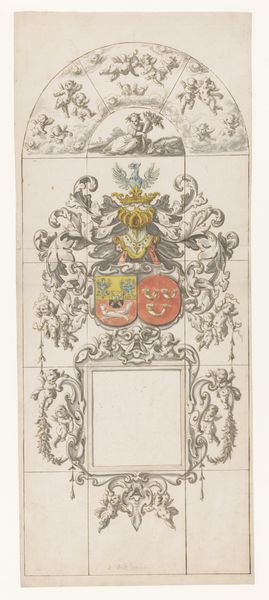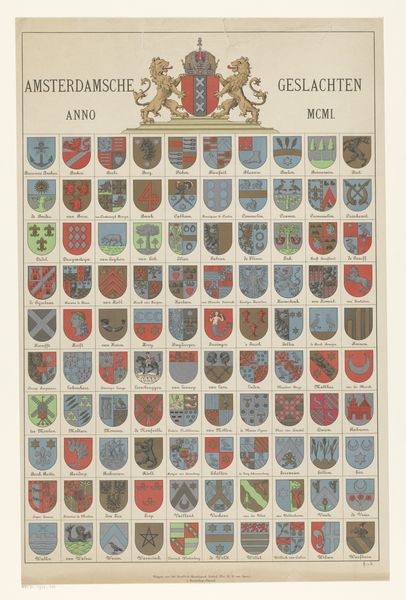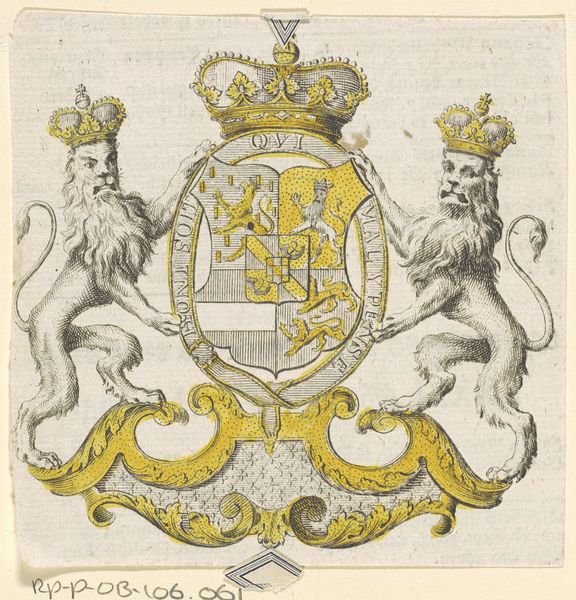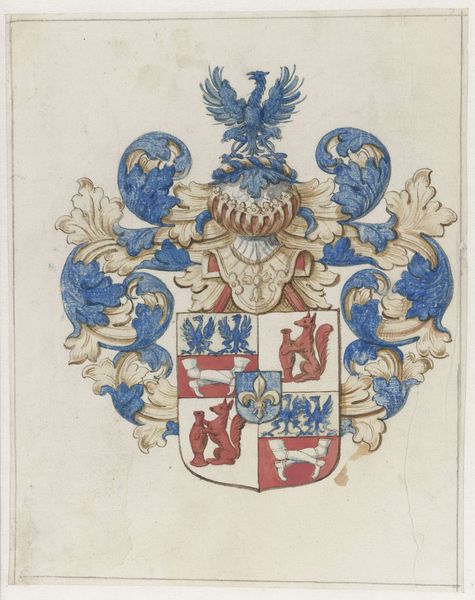
drawing, print, ink, pen
#
drawing
#
pen drawing
# print
#
ink
#
pen work
#
pen
#
watercolour illustration
#
history-painting
Dimensions: height 610 mm, width 230 mm
Copyright: Rijks Museum: Open Domain
Curator: Well, that's quite a display. At first glance, it looks like a beautifully rendered genealogical chart. Editor: Indeed. What we’re looking at is "Ontwerp voor glasraam 9 geschonken door de steden van Holland," a design for a stained-glass window, created between 1665 and 1667 by Pieter Jansz. The piece combines ink, pen, watercolor and print to depict the heraldic arms of various Dutch cities. Curator: I'm particularly interested in the process of how such detailed heraldry translates into stained glass. It is likely that many different artisans labored over the piece to recreate Jansz.'s drawings, selecting colored glass and adding intricate details. This isn’t just art, but labor history. Editor: Absolutely. The social and political implications here are vast. This stained-glass window, designed as a gift from Dutch cities, was most likely intended for a public space and meant to broadcast an image of unity and civic pride during a period of significant political and economic transformation. Each city identified with its own unique imagery, carefully crafted and preserved over centuries. Curator: The materiality tells a story, too. The vibrancy of the original inks hints at the brilliance they aimed to achieve in the stained glass. You know, understanding how the pigments were sourced and how these compositions impacted the guildsmen would illuminate this window's function within the 17th-century marketplace. Editor: Good point! The very act of presenting these city emblems as a unified window underscores the Dutch Republic’s power structure. Public displays such as this reinforced alliances but may have also accentuated existing socio-political divides, reminding the citizens of each region of the power dynamic at play. The placement of the window, within a prominent public structure, makes its context all the more impactful. Curator: Studying the craftsmanship—the quality of the line work, the subtleties in the color washes— reveals that each decision speaks to prevailing tastes and ideals of luxury during the Dutch Golden Age. I'm drawn to the collaborative effort this likely represented between artist and craftsmen. Editor: Yes, and understanding the patrons behind this work, how they negotiated the imagery and who specifically benefitted from its public display deepens our perspective, adding to the picture that this artwork offers us. Curator: In the end, observing this piece evokes an important narrative of craftsmanship, materials, and production, connecting past and present practices. Editor: Right, it reminds us that art always operates within a broader network of historical and cultural forces that must also be accounted for.
Comments
No comments
Be the first to comment and join the conversation on the ultimate creative platform.


